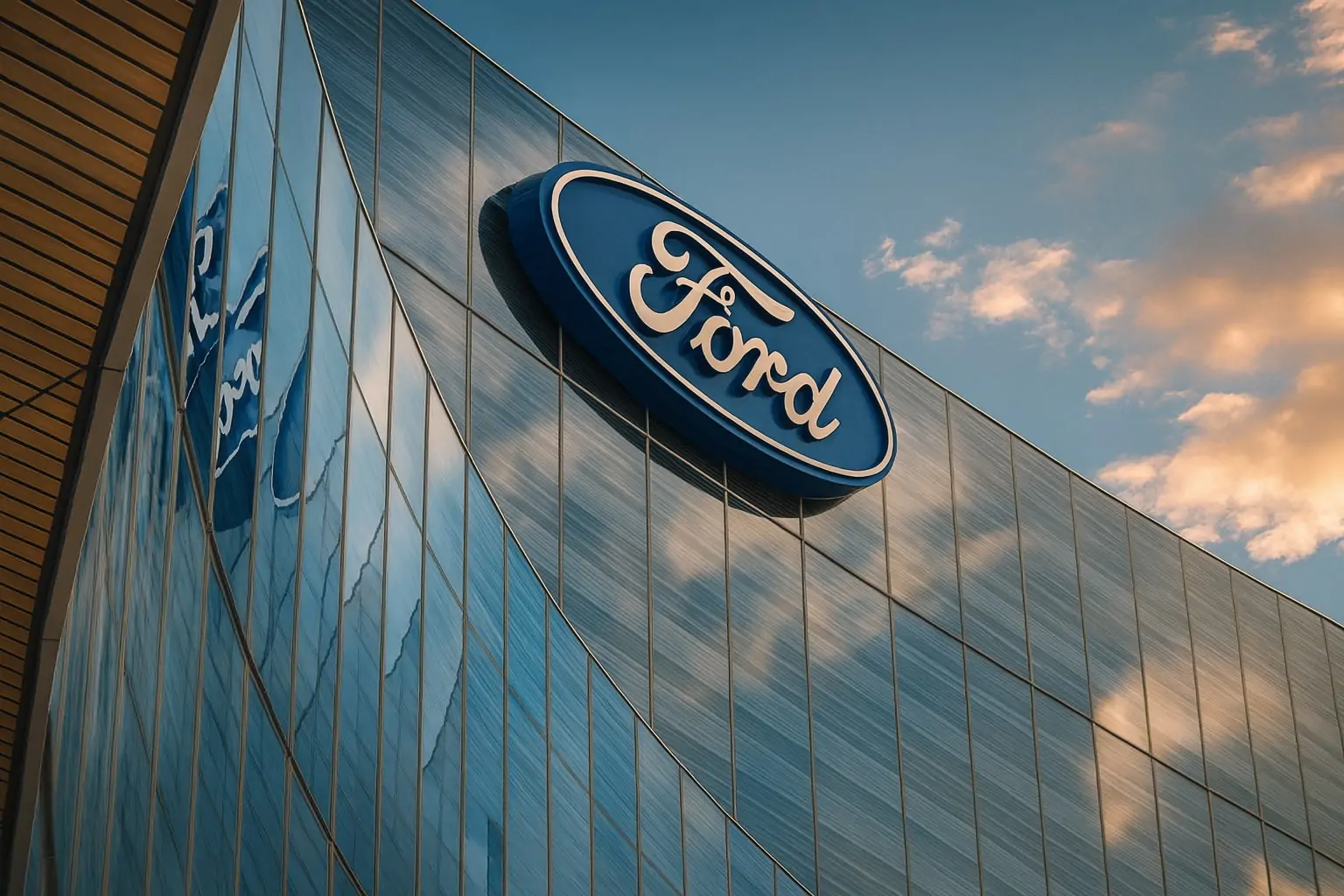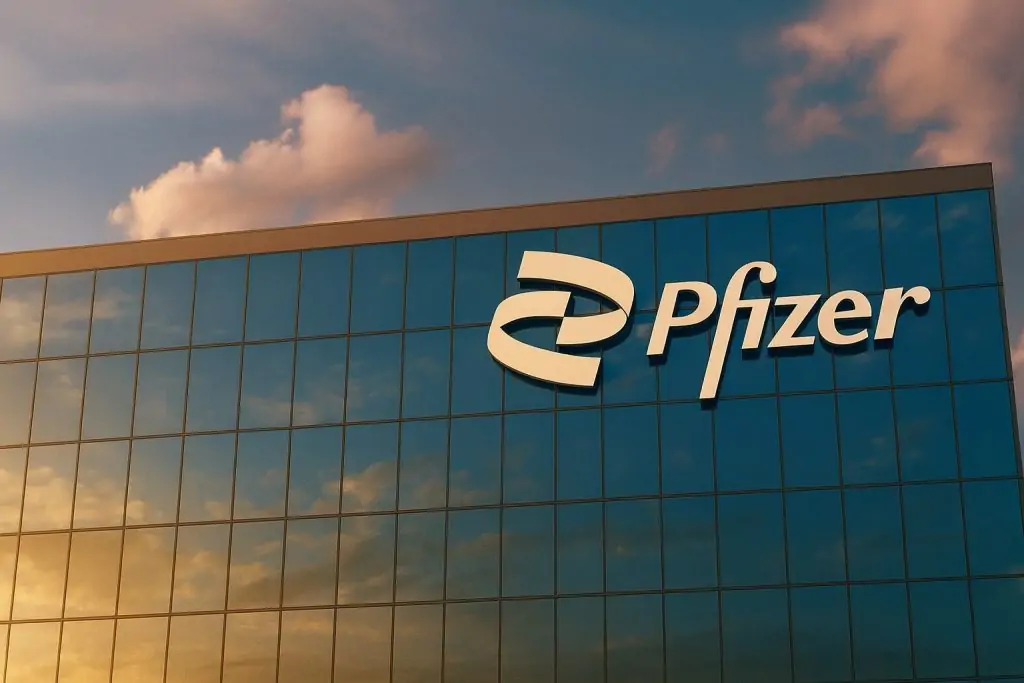Ford Motor Company (NYSE: F) sits at the center of several major storylines today: a large U.S. safety recall, a high-profile used‑car partnership with Amazon, the unveiling of a new world headquarters in Dearborn, ongoing questions around the future of the F‑150 Lightning — and a stock that’s quietly become one of Wall Street’s favorite dividend plays.
By mid‑afternoon Wednesday, Ford shares were trading around $13.14, up roughly 0.9% on the day, giving the automaker a market value of just over $52 billion. [1]
Key valuation markers remain firmly in “value stock” territory:
- P/E ratio: ~11x trailing earnings
- Dividend yield: about 4.6%, based on a $0.60 annual dividend
- 52‑week range:$8.44 – $13.97 per share [2]
Analyst data compiled by MarketBeat shows a consensus “Hold” rating and an average price target around $11.73, implying modest downside from current levels even after a strong run‑up. [3]
Yet sentiment has clearly improved. A widely circulated 24/7 Wall St. piece notes that Ford shares are up about 32% year‑to‑date, more than double the roughly 14% gain for the S&P 500 over the same period. [4]
Dividend and insider‑buying stories are reinforcing that bullish tone. A Nasdaq analysis published this morning highlights Ford’s 4.6% yield, pointing out that director John L. Thornton bought 7,520 shares at $13.19 on November 14 — a roughly $99,000 personal bet on the stock. [5]
On the institutional side, Universal Beteiligungs und Servicegesellschaft mbH disclosed that it boosted its Ford position by 3.7% in Q2, bringing its holdings to 2.12 million shares worth about $23 million and contributing to the nearly 59% institutional ownership of the automaker. [6]
That constructive backdrop is being tested today by fresh safety news.
Safety in the spotlight: recall of nearly 230,000 Bronco SUVs
Ford’s biggest headline on November 19 is a new recall affecting its popular Bronco line.
According to a filing with U.S. regulators and reporting from Reuters and CBS News, Ford is recalling 229,609 Bronco vehicles in the United States because a software defect in the instrument panel display can prevent key information — including warning lights and vehicle speed — from appearing on the cluster. [7]
CBS MoneyWatch reports that the campaign covers 2025–2026 model‑year Bronco and Bronco Sport vehicles, with Ford telling the National Highway Traffic Safety Administration (NHTSA) it is aware of 12 warranty claims potentially related to the issue as of November 7. [8]
Owners will receive a free software update, which can be installed either:
- Over the air (OTA), or
- At a Ford dealer, at no charge. [9]
Separately, Reuters notes that Ford is also recalling 20,558 hybrid vehicles due to a manufacturing defect in their high‑voltage battery cells, which could lead to battery failure. [10]
The recall lands in what has already been a heavy year for Ford on the safety front. CBS points out that the company recalled about 740,000 vehicles last month for issues ranging from rear‑view camera problems to potential steering and seatbelt defects. [11]
Investor takeaway:
- Financially, software‑based fixes — especially when delivered OTA — tend to be less costly than hardware recalls, but the scale (nearly 230,000 vehicles) is still significant.
- Strategically, repeated recalls keep pressure on Ford’s quality metrics at a time when it’s trying to convince buyers to follow it deeper into advanced software, electrification and driver‑assist technologies.
Digital retail push: Amazon Autos partnership looks bigger than it first appeared
While safety issues grab the headlines, Wall Street is also parsing whether Ford’s new partnership with Amazon could reshape how it sells cars.
On November 17, Ford and Amazon announced that shoppers can now browse, finance and purchase certified pre‑owned Ford vehicles directly through Amazon Autos, with the program initially launching in Los Angeles, Seattle and Dallas. [12]
Key details from Reuters, The Verge and Business Insider:
- The program is limited to certified pre‑owned (CPO) vehicles — not new cars.
- Customers see inventory from local Ford dealers within roughly a 75‑mile radius, complete most paperwork online, and then pick up the vehicle at the dealership. [13]
- About 160–180 dealers have expressed interest, with around 20 stores participating at launch. [14]
- Vehicles listed on Amazon carry Ford’s Blue Advantage benefits, including multi‑point inspection, warranty coverage, roadside assistance and, in some cases, a 14‑day or 1,000‑mile money‑back guarantee. [15]
- Dealers retain control over pricing and post‑sale service, with Amazon effectively acting as a middleman and customer‑acquisition engine. [16]
Today, a fresh analysis from MarketBeat — “Why Ford’s Deal With Amazon Is Bigger Than You Think” — argues that investors may be underestimating the strategic importance of the tie‑up. [17]
That piece frames the Amazon program as:
- A “capital‑light” way to modernize retail, plugging Ford’s existing dealer network into Amazon’s vast e‑commerce infrastructure instead of building a standalone digital platform from scratch.
- A tool to boost high‑margin CPO sales and support used‑vehicle values, which in turn can improve economics on new‑car leasing.
- A template for how legacy automakers can compete with direct‑to‑consumer models like Tesla’s, while still complying with state franchise laws. [18]
Interestingly, MarketBeat notes that Amazon issued a press release about the partnership, but Ford did not, suggesting Dearborn may be deliberately keeping expectations in check while it tests the concept. [19]
For Ford shareholders, the big question is scale: if the pilot in three metros proves popular, the company could roll out Amazon Autos integration to many more dealers — potentially turning used‑vehicle operations into an even more important profit driver than they already are.
New world headquarters: Ford doubles down on Dearborn
While Ford rethinks how it sells vehicles online, it is also reshaping the physical heart of the company.
Over the weekend, Ford formally opened its new world headquarters in Dearborn, Michigan — a 2.1‑million‑square‑foot complex that is roughly twice the size of the company’s iconic “Glass House” building from 1956. [20]
Coverage by Fox Business and regional outlets highlights several key features:
- The building sits about three miles from the old headquarters, marking Ford’s first HQ move in seven decades. [21]
- The new main showroom includes 10 floor turntables and hidden side walls that open into additional display areas, giving executives the ability to stage full product reviews under a single roof. [22]
- There are six design studios, including a fabrication milling shop with metal, wood, trim and paint capabilities, supporting the full clay‑model and prototype process. [23]
- The broader campus — part of what will be known as the Henry Ford II World Center — is designed to bring engineering, design and technology teams together to speed decision‑making and product development. [24]
At the opening ceremony, CEO Jim Farley described the campus as more than office space, calling it “an investment in the most important asset we have at Ford – each of us,” and emphasising its role in “shaping the future” of the company. [25]
Construction is expected to be fully completed by 2027, with employees gradually transitioning from the old Glass House to the new facility. [26]
The new building also figured into Reuters’ Amazon story, which ran a photo of the blue Ford oval mounted on the new headquarters facade, symbolically tying the digital retail pivot to a physical reboot of Ford’s corporate home. [27]
EV crossroads: F‑150 Lightning pause and the next‑generation strategy
Beyond today’s recall headlines, investors remain focused on the future of Ford’s electric‑vehicle strategy, particularly the fate of the F‑150 Lightning.
A series of reports over the past few weeks paints a complex picture:
- A fire at a Novelis aluminum plant — a key supplier for F‑Series trucks — has forced Ford to cut F‑150 output, including an indefinite pause in F‑150 Lightning production, according to coverage referencing company sources. [28]
- Car and Driver, citing the Wall Street Journal, reports that Ford is considering discontinuing the Lightning altogether, potentially skipping the 2026 model year if profitability and demand do not improve. [29]
- At the same time, Ford CEO Jim Farley has stressed that the company “can’t walk away” from EVs and remains committed to electrification even as its Model e division racks up multi‑billion‑dollar losses. [30]
A deep‑dive EV feature in WIRED this week offers more context on where Ford may be headed next. The article describes a “clean-sheet” EV platform being developed by a skunkworks team in Southern California that aims to radically simplify vehicle design and assembly, using big structural castings and lithium‑iron‑phosphate (LFP) batteries to cut costs. [31]
Within that plan:
- The first vehicle is slated to be a midsize electric pickup roughly the size of the Ford Maverick, launching from a retooled plant in Louisville, Kentucky in the second half of 2027.
- The same platform is expected to spawn two additional EVs, including replacements for today’s F‑150 Lightning and e‑Transit van, targeted for around 2028. [32]
Taken together, the news flow suggests that Ford is re‑sequencing its EV bets rather than abandoning them — pulling back on a money‑losing first‑generation Lightning while it prepares a cheaper, more efficient second‑generation platform designed to compete head‑on with low‑cost Chinese EVs and Tesla’s next wave of vehicles.
For investors, that raises two conflicting forces:
- Near‑term risk: Lost production, possible write‑downs and the optics of pausing a flagship first‑mover product.
- Long‑term optionality: A chance to relaunch Ford’s EV lineup on a leaner cost base, potentially turning electrification from a drag into a competitive advantage later in the decade.
Workforce warning: 5,000 high‑paying mechanic jobs unfilled
Another Ford story trending today doesn’t center on vehicles or stock charts, but on people.
In a new Moneywise piece, CEO Jim Farley warns that “America is in trouble” because thousands of skilled trade jobs are going unfilled even as headlines focus on white‑collar layoffs in tech and finance. [33]
According to the article:
- Ford currently has around 5,000 open mechanic and technician roles.
- Many of those jobs can pay up to $120,000 per year, reflecting the growing complexity of modern vehicles and the need for specialized skills. [34]
Farley’s comments echo earlier Wall Street Journal reporting on Ford’s struggle to find enough qualified mechanics for its dealer network, particularly as EVs add new layers of software and high‑voltage systems on top of traditional mechanical work. [35]
For investors, the mechanic shortage is more than a human‑interest story:
- A lack of technicians can slow warranty repairs and hurt customer satisfaction, especially when recalls are frequent.
- It may also raise labor costs over time, as dealers and automakers compete for scarce talent with higher wages and training incentives.
Dividend and valuation narrative: Ford as an “absurdly cheap” income stock?
Alongside quality and strategic headlines, Ford’s income profile is getting fresh attention today.
A new BNK Invest / Nasdaq column titled “Snag This Bargain 4.6% Yield Dividend Stock Even Cheaper Than Director Thornton Did” spotlights Ford’s $0.60 per‑share annual dividend, paid quarterly, and its recent ex‑dividend date of November 7, 2025. At today’s prices, that works out to an annualized yield of roughly 4.6%, well above the S&P 500 average. [36]
Separately, a Motley Fool article — syndicated through outlets like AOL and Yahoo Finance — includes Ford in a list of “3 absurdly cheap dividend stocks to buy for less than $100.” The piece argues that Ford could continue to outperform as it walks back parts of its costly EV pivot and leans more heavily on its profitable truck, SUV and commercial businesses, all while rewarding shareholders with a rich dividend. [37]
MarketBeat and other data providers back up the “value” label:
- P/E multiple around 11x, below both the broader market and the average for the auto sector.
- Price‑to‑book ratio of roughly 1.1, suggesting the shares trade close to the value of Ford’s net assets.
- Consensus rating: “Hold,” but with a notable split between income‑oriented bulls and macro‑focused skeptics. [38]
At the same time, there are cautionary voices. Some commentators have flagged Ford as a potential short candidate, pointing to EV losses, recall costs and cyclical risk if the U.S. economy slows. [39]
In other words, today’s market narrative isn’t that Ford is a hidden gem no one has noticed. It’s that a very visible, very cyclical automaker is yielding nearly 5% while trying to execute one of the most complex industrial transitions of our time.
What to watch next
For readers tracking Ford Motor Company on November 19, 2025, the key storylines to monitor over the coming weeks include:
- Recall fallout
- Does NHTSA report any accidents or injuries tied to the Bronco instrument cluster defect?
- How quickly can Ford complete OTA and dealer updates for the nearly 230,000 affected vehicles? [40]
- Amazon Autos expansion
- Do more than the initial 20 dealers come online quickly, and does Ford expand beyond Los Angeles, Seattle and Dallas? [41]
- F‑150 Lightning decision point
- Does Ford formally outline its plans for the Lightning’s model‑year 2026 and beyond, or provide updated guidance on EV losses and investments? [42]
- Execution at the new HQ
- As more teams move into the Dearborn campus, does Ford show tangible progress in shortening development cycles and improving quality — two of the new headquarters’ stated goals? [43]
- Dividend sustainability
- With a 4.6–4.7% yield and heavy capital needs for EVs and software, investors will be watching Ford’s next earnings call closely for any hints about capital allocation priorities. [44]
For now, the market appears willing to look past another big recall and ongoing EV uncertainty, focusing instead on Ford’s high yield, improving share price, bold retail experiment with Amazon and the symbolic reset represented by its new world headquarters.
This article is for informational purposes only and does not constitute investment advice or a recommendation to buy or sell any security.
References
1. www.marketbeat.com, 2. www.marketbeat.com, 3. www.marketbeat.com, 4. www.aol.com, 5. www.nasdaq.com, 6. www.marketbeat.com, 7. www.reuters.com, 8. www.cbsnews.com, 9. www.reuters.com, 10. www.reuters.com, 11. www.cbsnews.com, 12. www.reuters.com, 13. www.reuters.com, 14. www.reuters.com, 15. www.businessinsider.com, 16. www.theverge.com, 17. www.marketbeat.com, 18. www.reuters.com, 19. www.marketbeat.com, 20. www.foxbusiness.com, 21. www.thedailyreporteronline.com, 22. www.foxbusiness.com, 23. www.foxbusiness.com, 24. www.thedailyreporteronline.com, 25. www.foxbusiness.com, 26. www.foxbusiness.com, 27. www.reuters.com, 28. www.the-sun.com, 29. www.caranddriver.com, 30. www.marketwatch.com, 31. www.wired.com, 32. www.wired.com, 33. moneywise.com, 34. moneywise.com, 35. www.marketbeat.com, 36. www.nasdaq.com, 37. www.aol.com, 38. www.marketbeat.com, 39. www.aol.com, 40. www.reuters.com, 41. www.reuters.com, 42. www.caranddriver.com, 43. www.foxbusiness.com, 44. www.nasdaq.com







